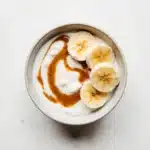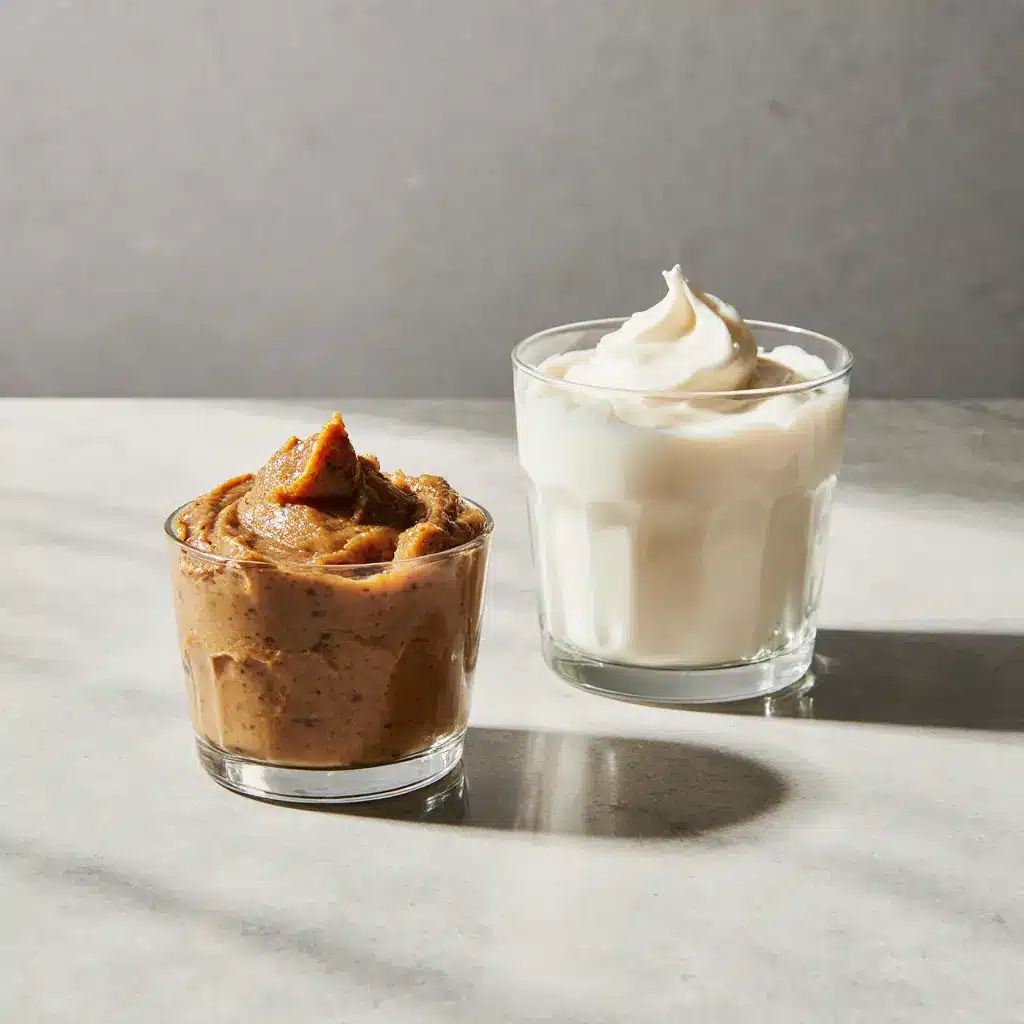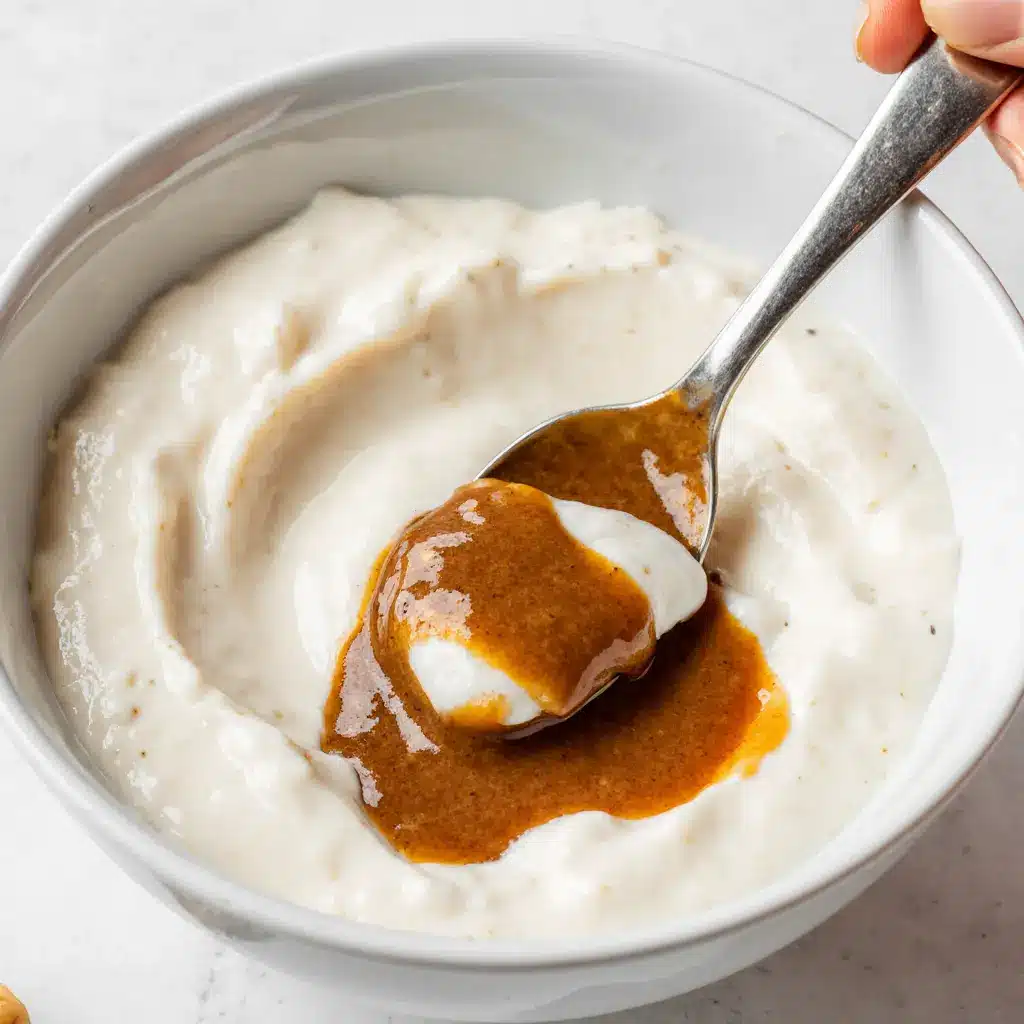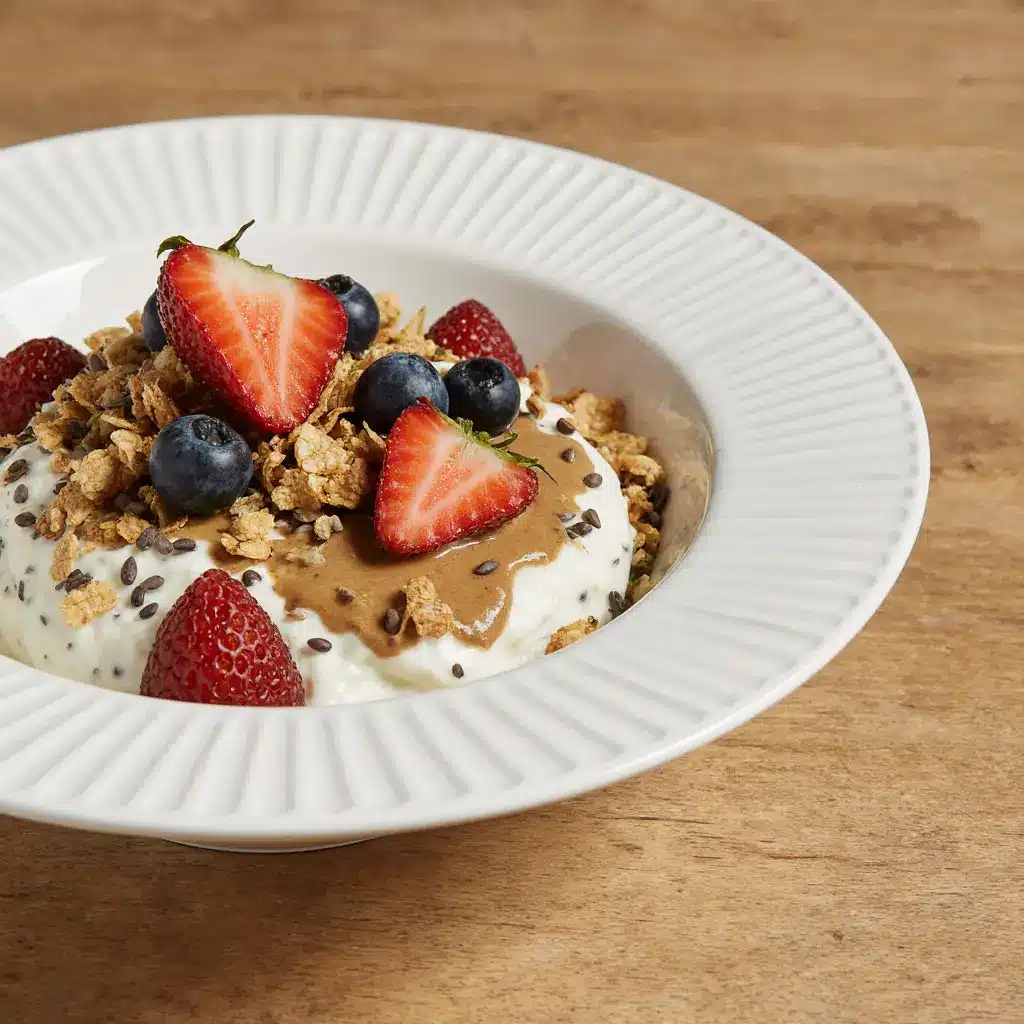Greek yogurt and peanut butter might not seem like an obvious pair, but when combined, they create a nutrient-dense powerhouse that supports everything from muscle growth to satiety. These two ingredients, each rich in their own nutritional strengths, work beautifully together — not just in taste, but in their health benefits. Whether you’re aiming to improve your breakfast game or looking for a filling snack, understanding the greek yogurt and peanut butter nutrition combo could be your next best decision.
This article walks you through everything you need to know: from individual macronutrient profiles to creative, satisfying ways to enjoy this blend. We’ll also point out some important cautions, especially for those with dietary sensitivities.
If you love versatile, nutrient-packed ideas like this, check out how soaked chia seeds in yogurt boost digestion, or how our banana pancakes recipe pairs well with peanut butter for a protein-packed breakfast. You might also enjoy our refreshing lemon ginger spinach smoothie as a complement to your yogurt bowls.
Why Greek Yogurt & Peanut Butter Work Together
Combining fast-digesting whey and slow-digesting casein with plant protein stretches amino-acid delivery for hours. The fats in peanut butter also reduce the glycemic load of Greek yogurt, promoting steady blood sugar and satiety—ideal for weight management and post-workout recovery (Healthline; Medical News Today).
Nutritional Breakdown of Greek Yogurt
Macronutrients per 100g
Greek yogurt differs from regular yogurt in texture, protein content, and sugar levels. Here’s a quick breakdown of the nutritional values per 100g of plain, unsweetened Greek yogurt (2% fat):
| Nutrient | Amount per 100g |
|---|---|
| Calories | 59 kcal |
| Protein | 10 g |
| Fat | 2 g |
| Carbohydrates | 3.6 g |
| Sugars | 3.2 g |
Greek yogurt is known for its thick, creamy consistency and its high protein-to-calorie ratio, making it a preferred base in many fitness-forward meals. It’s also lower in sugar than most flavored or traditional yogurts, which helps support glycemic control.

Greek Yogurt and Peanut Butter Combo
Equipment
- bowl
- spoon or whisk
- Measuring spoons
Ingredients
- 170 g plain Greek yogurt (2% fat)
- 1–2 tbsp unsweetened peanut butter
- 1 tsp honey or maple syrup (optional)
- 1/4 tsp cinnamon (optional)
- fresh fruit, granola or chia seeds for topping (optional)
Instructions
- Add Greek yogurt and peanut butter to a bowl.
- Mix thoroughly until smooth and creamy.
- Add honey or cinnamon, if using, and mix again.
- Top with fresh fruit, granola, or chia seeds as desired.
- Serve immediately or chill for later. Great as a snack or breakfast.
Notes
Protein Quality & Bioavailability
One of the standout features of Greek yogurt is its complete protein profile. It contains all nine essential amino acids in optimal ratios. This makes it a particularly helpful option for muscle recovery and maintenance, especially post-workout.
Its casein and whey content means you get both fast-acting and slow-digesting proteins — ideal for longer satiety. Additionally, Greek yogurt is rich in calcium, potassium, and probiotics that aid gut health. For a similar gut-boosting effect, check out our pink salt sole water recipe — another simple, natural way to support digestion.
Nutritional Breakdown of Peanut Butter
Macronutrients per 100g
Peanut butter is more than just a nostalgic spread for toast — it’s a dense, nutrient-packed food that brings healthy fats, plant-based protein, and essential minerals to your meals. Below is a basic breakdown of unsweetened, smooth peanut butter (per 100g):
| Nutrient | Amount per 100g |
|---|---|
| Calories | 588 kcal |
| Protein | 25 g |
| Fat | 50 g |
| Carbohydrates | 20 g |
| Sugars | 9 g |
| Fiber | 6 g |
With nearly 600 calories per 100g, peanut butter is calorie-dense, so portion control matters — but its high protein and fiber content make it filling and satisfying, perfect for active days or low-sugar snacking.
If you’re curious about other high-protein spreads, check out our easy pistachio butter recipe, which also packs a flavorful, creamy punch.
Healthy Fats, Vitamins, and Minerals
The fat profile of peanut butter leans heavily on monounsaturated fats, the same kind found in olive oil. These fats support heart health and reduce inflammation. It also contains omega-6 fatty acids, which can be beneficial when balanced with omega-3s.
Peanut butter is a great source of:
- Vitamin E (antioxidant and immune function)
- Magnesium (muscle and nerve support)
- Niacin (B3) for energy metabolism
- Potassium (for electrolyte balance)
Just like we covered in our anti-inflammatory foods list, natural peanut butter can fit into an anti-inflammatory lifestyle when consumed without added sugars or hydrogenated oils.
If you’re watching your sodium or sugar intake, choose brands labeled as “natural” or “unsweetened,” or make your own — just like we do in our pistachio butter guide.
Combining Greek Yogurt & Peanut Butter
Protein Synergy
On their own, Greek yogurt and peanut butter are already excellent protein sources. But together? They create a more satisfying and complete protein meal that delivers both fast-acting and slow-digesting proteins.
Greek yogurt gives you quick-digesting whey protein and longer-lasting casein, ideal for post-workout recovery or bedtime snacks. Peanut butter, while plant-based, contributes steady-release protein and healthy fats that help you stay full longer.
This combination supports muscle maintenance, appetite regulation, and even fat loss — especially when paired with nutrient-dense recipes like our supermodel snack that follow a similar balance of macronutrients.

Glycemic Balance
Combining a low-sugar dairy like Greek yogurt with the healthy fats in peanut butter creates a perfect glycemic duo. The fats slow down the digestion of sugars and carbs, which helps maintain stable blood sugar levels and avoids spikes that often lead to cravings or energy crashes.
This is especially helpful in the morning, when many people reach for high-sugar breakfast options. Instead, consider pairing Greek yogurt and peanut butter in recipes like the ones featured in our banana pancakes, which work well with a spoonful of peanut butter on top for protein and flavor.
Taste and Texture Benefits
It’s not just about nutrients — it’s also about mouthfeel and satisfaction.
- Greek yogurt offers creaminess and a slight tang
- Peanut butter adds a nutty, earthy richness
Together, they make smoothies thicker, bowls creamier, and desserts more indulgent — without added sugar. Try combining them in high-protein pancake batter or using the blend as a topping for sourdough protein pancakes.
For those who enjoy frozen desserts, blending this combo into recipes like cottage cheese ice cream offers a high-protein, creamy treat with zero compromise on flavor.
Best Ways to Enjoy This Combo
Breakfast Ideas
Starting your day with Greek yogurt and peanut butter isn’t just filling — it’s satisfying and energizing. You can keep it as simple as a dollop of peanut butter stirred into plain Greek yogurt, or build it into something more exciting.
Try layering both in a parfait with berries and oats, or blend into a smoothie bowl topped with nuts, seeds, and banana slices. This combo works wonders with our lemon ginger spinach smoothie — just toss in a spoonful of peanut butter to boost the healthy fats and protein.
Another option? Add it as a topping on our warm banana pancakes for a creamy, flavorful breakfast that keeps you full for hours.
For busy mornings, you can even prep this mix into overnight oats or frozen yogurt bites.
Snack Ideas
Snacks are where this pairing really shines. A quick bowl of Greek yogurt and peanut butter can keep you full and focused through that afternoon slump.
Here are a few easy favorites:
- Dip sliced apples or celery into a whipped Greek yogurt–peanut butter mix
- Spread onto rice cakes or toast
- Freeze in small silicone molds for mini snack bites
If you’re craving a sweet pick-me-up, the blend pairs beautifully with the idea behind our sweet tea peach — a snack that offers both refreshment and comfort.
You can also drizzle it over the keto ice cream sandwiches from your freezer stash, or layer it with cacao nibs and chia for a high-protein power snack like the one in our soaked chia seeds in yogurt guide.

Dessert Ideas
Think desserts can’t be healthy? Think again. The thick and creamy base of Greek yogurt and peanut butter makes an ideal alternative to traditional dessert bases. Here are a few ways to enjoy it:
- Frozen yogurt bark with chopped dark chocolate and almonds
- Greek yogurt mousse with whipped peanut butter and a touch of honey
- High-protein “cheesecake” cups with a nut crust
Blend this combo with some vanilla extract and top with a sprinkle of cinnamon for a 3-minute dessert that feels indulgent but fits any wellness goal.
You can also pair it with recipes like our 2-ingredient cottage cheese ice cream for a frozen treat that’s creamy, balanced, and incredibly easy.
Risks & Precautions
Even though Greek yogurt and peanut butter offer plenty of benefits, they’re not perfect for everyone. Here are some key considerations before making them a daily staple.
Allergies and Sensitivities
Peanut butter is one of the top food allergens in the U.S. For individuals with a peanut allergy, even trace amounts can cause serious reactions. Always check ingredient labels, especially on store-bought yogurts or snacks that might contain cross-contamination.
Greek yogurt, on the other hand, contains dairy — which may be a concern for people who are lactose intolerant or allergic to milk proteins. While Greek yogurt is lower in lactose than regular yogurt, it can still cause digestive issues in sensitive individuals.
If you’re sensitive to dairy, consider plant-based alternatives like almond or soy yogurt and pair them with almond butter or sunflower seed butter. You can find more dairy-free snack ideas similar to this in our guide to natural tonic drinks that support digestion without dairy.

Portion Control and Additives
While both ingredients are nutrient-dense, they’re also calorie-rich. A couple tablespoons of peanut butter can quickly add up, especially when combined with full-fat Greek yogurt. It’s easy to go overboard, especially if you’re topping a smoothie bowl or building a dessert.
Also, many commercial brands contain added sugars, oils, or artificial thickeners that reduce the nutritional value. Stick with:
- Plain, unsweetened Greek yogurt
- Natural peanut butter with just peanuts and salt (or no salt at all)
If you’re trying to manage your weight, check out the pink salt trick for weight loss, which is a natural and simple approach to appetite control.
Portion awareness and label reading go a long way in making this combo part of a truly healthy routine.
FAQs
Is Greek yogurt and peanut butter a good combination for weight loss?
Yes — when portioned mindfully. Greek yogurt provides high-quality protein and gut-friendly probiotics, while peanut butter offers healthy fats that keep you full. Together, they help manage appetite and reduce snacking. For a low-calorie twist, pair this combo with recipes like our sweet potato tempura roll that emphasize whole foods and balance.
How much peanut butter should I mix into Greek yogurt?
A common portion is 1 to 2 tablespoons per ¾ cup of Greek yogurt. This gives you the ideal balance of protein and fat without going overboard on calories. If you’re blending them into something like a smoothie for weight loss, aim for even less — around 1 tablespoon is enough.
Can you eat this combo every day?
Absolutely, as long as you’re not allergic and your overall diet remains balanced. It’s a clean, satisfying option for breakfast, snacks, or dessert. Just be cautious about added sugars in flavored yogurts or sweetened peanut butter.
What are some high-protein recipes that use both ingredients?
Try Greek yogurt–peanut butter smoothies, frozen snack bites, overnight oats, or high-protein pancakes. You can even make a simple dip for fruit or use it as a frosting alternative. For inspiration, check out our coconut cloud coffee recipes that combine creamy textures with high-protein pairings.
Conclusion
Greek yogurt and peanut butter are more than just a tasty pairing — they’re a nutritional powerhouse when combined thoughtfully. From supporting muscle growth and weight management to keeping blood sugar balanced, this duo checks all the right boxes.
Use them in smoothies, snacks, or indulgent desserts — just remember to keep an eye on portion sizes and stick with clean, simple ingredient lists. Whether you’re starting your day or curbing an afternoon craving, this combo fits perfectly into real life.
So next time you reach for a snack, don’t underestimate the creamy power of Greek yogurt and peanut butter. It’s simple, wholesome, and incredibly satisfying.






9 thoughts on “Greek Yogurt & Peanut Butter Nutrition Guide”